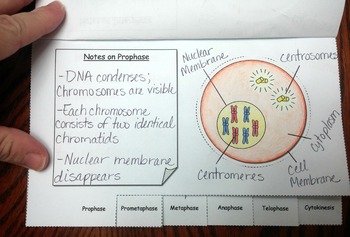
As adults we may be tempted to give them questions we feel might be important to explore, however we need to refrain from this and allow our students to practice asking their own questions. Some students may also benefit from writing their ideas down before they share. Many students have ideas and questions but need time to formulate their idea or question into words. Guidance: It is important to allow time for thinking. Although questions may vary, many students are curious about what causes cancer and why it presents in so many different ways. Investigative questions are common questions kids may ask after they are introduced to the phenomenon. Common questions will arise for most students, which is what this task builds upon. Our goal is to motivate curiosity and not distinguish between "good questions" and "bad questions" or "right questions" and "wrong questions". ALL student questions are okay at this point. Our goal here is to promote student thinking about questions they have related to this.

This is a critical step in eliciting further questions about cell growth. Have students observe the video above ( slide 2) and write down what they notice and wonder about the phenomenon presented. This is authentic engagement and a powerful learning process. Presenting a phenomenon and asking students to generate questions about it creates a need to figure out the answer to those questions. Guidance: The goal is to get students thinking about what they know and think they know about of cancer including how it grows. So, How are cancer cells different from normal cells? Let's investigate! Although cancer can affect different kinds of cells throughout an animal and grows at different speeds, cancers all start the same way - with a mutation.

Today, we look at cancer from a new perspective - how cell regulation affects normal cell division. Many traditional classroom discussions about cancer focus on cause, treatment and prevention. While students could complete this task independently, we encourage them to work virtually with peers or in the home with family members.īefore you begin the task, you may want to access the accompanying How are cancer cells different from normal cells? Google Slides. This task has been designed to be used by students, parents, and teachers in distance and home learning. Students engage in science and engineering practices to figure out what happens in cells that make them grow the way they do. Today's task, How are cancer cells different from normal cells ?, creates an opportunity for students to look at examples of how normal cells divide and compare them to how cancer cells divide. In today's Daily Do, we use the phenomenon of a teen diagnosed with Stage III melanoma (see video below) to prompt students to think about cancer differently than they have in the past. These new cells can then perform their specific functions or continue dividing if needed.Cancer is a topic often covered in high school biology class at the end of a unit on cells as an example of what happens when cells do not divide properly or divide uncontrollably without regulatory mechanisms. However, when used as a phenomena, it can allow for students to use cancer as a vehicle for understanding cell division. Through mitosis, the original cell divides into two identical cells, each with its own set of chromosomes. In animal cells, the cell pinches in the middle, while in plant cells, a wall-like structure forms to separate the two cells. 👉🏼Cytokinesis: The cell’s cytoplasm divides, forming two separate daughter cells. The chromosomes begin to relax and become less tightly packed. 👉🏼Telophase: The separated chromosomes reach the ends of the cell, and new nuclear membranes start forming around them. 👉🏼Anaphase: The pairs of chromosomes separate, and the spindle fibers pull them to opposite ends of the cell.

The spindle fibers attach to each chromosome to make sure they are properly aligned. 👉🏼Metaphase: The chromosomes line up in the middle of the cell, like they are on a plate. The chromosomes become even more tightly packed. 👉🏼Prometaphase: The nuclear envelope completely disappears, and the chromosomes connect to spindle fibers. The protective layer around the nucleus breaks down, and structures called centrioles move to opposite ends of the cell. 👉🏼Prophase: The chromosomes inside the cell become visible and start to coil up.

Is the process of cell division that happens in our body’s cells.


 0 kommentar(er)
0 kommentar(er)
